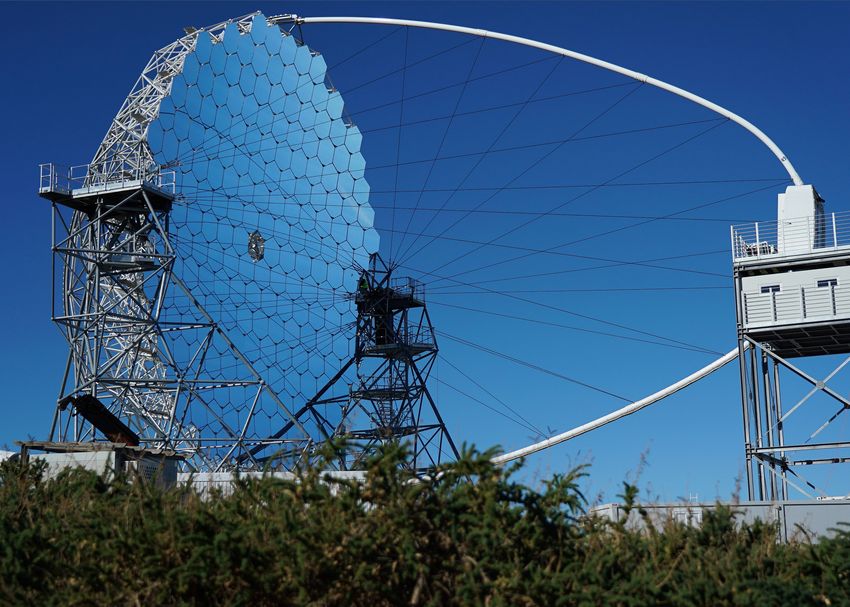As a prototype, the LST-1 forms the vanguard for three other telescopes of the same type at the same location. Furthermore, the plan for the site also includes 15 medium-sized telescopes. The remaining CTA telescopes will be built at the Paranal Observatory in Chile.
At 45 meters high and with a mirror diameter of 23 meters, the LST telescopes are the largest instruments at the CTA Observatory. On 10 October 2018, the LST-1 will be inaugurated at its location in the “Roque de los Muchachos” observatory in La Palma.
New insights into violent cosmic regions
The Max Planck Institute for Physics played a key role in the design and construction of the telescope: Scientists and technicians from the Institute planned and constructed the pin and the rail system, which allows the telescope to be moved to any observation position required in less than 20 seconds. The Institute was also responsible for building the camera tower, which enables direct access to the camera.
As Masahiro Teshima, Director at the Max Planck Institute for Physics, who leads the LST program in the CTA consortium, explains: “After a construction period of just three years, our team was able to erect the first CTA telescope, the LST-1. Using more than 100 telescopes at the observatory in total, scientists will gain unique insights into cosmic regions in and beyond our galaxy. We hope to gain new knowledge about the highest-energy objects and phenomena that we know from the Universe – such as active galactic nuclei or the omnipresent cosmic radiation.”
The CTA telescopes cover the entire energy range of gamma rays known to date: From 20 gigaelectron volts (GeV) to 300 teraelectron volts. Here, LST telescopes are designed to cover the energy spectrum to the lowest possible energy of 20 GeV . The medium-sized and small telescopes (MST and SST) also being planned measure the higher energy of gamma radiation.
Focus on short and faint gamma-ray emissions
The parabolic mirror surface of the LST covers an area of 400 square meters. It collects and bundles Cherenkov light, which is created when gamma radiation hits the earth’s atmosphere. The camera records the light and converts it into electrical signals, which are electronically read off and evaluated. Despite its height and weight of around 100 tons, it can be moved into any position required in less than half a minute, so that short, low-energy Cherenkov radiation can also be recorded.
With their short reaction time and low energy threshold, the LSTs are ideal for observing active galactic nuclei and gamma ray bursts – brief, extremely bright phenomena that last for several minutes at most. “With the LS telescopes, CTA can also study very weak cosmic sources that are located very far away”, Teshima continues.
Before the LST-1 is formally accepted to be operated by the multinational CTA Observatory (CTAO), it has to undergo a critical design review – like any other technical delivery. These measures are intended to verify that the design complies with CTA science goals, operational needs, safety standards, etc.
In total, over 200 scientists and technical experts from 10 countries are involved in the LST-1 project. The leading institutions were the LAPP in France, INFN, Italy, the ICRR at the University of Tokyo, the MPI for Physics, the IFAE and the CIEMAT in Spain.
Contact:
Max-Planck-Institut für Physik
Prof. Dr. Masahiro Teshima
Tel:+49 89 32354-301
